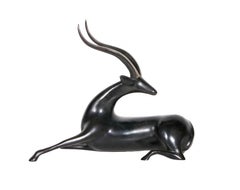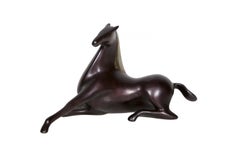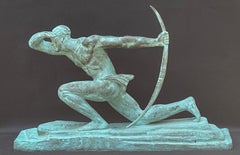Loet Vanderveen Art
Loet Van Der Veen was a Dutch artist and sculptor, born in 1921, in Rotterdam, Netherlands, very close to a Victorian-era zoo, which he visited every day, until it was destroyed during World War II. He escaped from occupied Netherlands and served in the R.A.F., during the war. During the first 11 years following the war, he worked as a fashion designer in Zurich, London and New York. He studied Chinese glaze techniques for three years, with Fong Chow, then the curator of the Far Eastern Department of the Metropolitan Museum, in New York. Loet left New York and built a mountain-top house and studio, 1,600 feet above the Pacific Ocean, along California’s remote Big Sur coastline. Living in a remote area, where there was an abundance of wildlife, coupled with his love for animals, led him to create ceramic animal forms. Striving for more sophisticated and graceful images, he ventured into designing animals in bronze, enhanced by a rich palette of subtle patinas, offering uniquely stylized interpretations that have been appreciated by distinguished worldwide collectors. His works are in the permanent collections of museums throughout the world.
1920s Art Deco Loet Vanderveen Art
Bronze
1920s Art Deco Loet Vanderveen Art
Bronze
1930s Art Deco Loet Vanderveen Art
Bronze
1920s Art Deco Loet Vanderveen Art
Bronze
1970s Art Deco Loet Vanderveen Art
Bronze
1980s Art Deco Loet Vanderveen Art
Bronze
20th Century Art Deco Loet Vanderveen Art
Bronze
Early 20th Century Art Deco Loet Vanderveen Art
Marble, Bronze
19th Century Art Deco Loet Vanderveen Art
Bronze
1920s Art Deco Loet Vanderveen Art
Bronze
Maurice Guiraud-Rivière"La Comete" Iconic French Art Deco Silvered Bronze 1920s Female Nude, c. 1925
1970s Art Deco Loet Vanderveen Art
Bronze, Gold Leaf
1920s Art Deco Loet Vanderveen Art
Bronze
1930s Art Deco Loet Vanderveen Art
Bronze
Early 20th Century Art Deco Loet Vanderveen Art
Bronze



